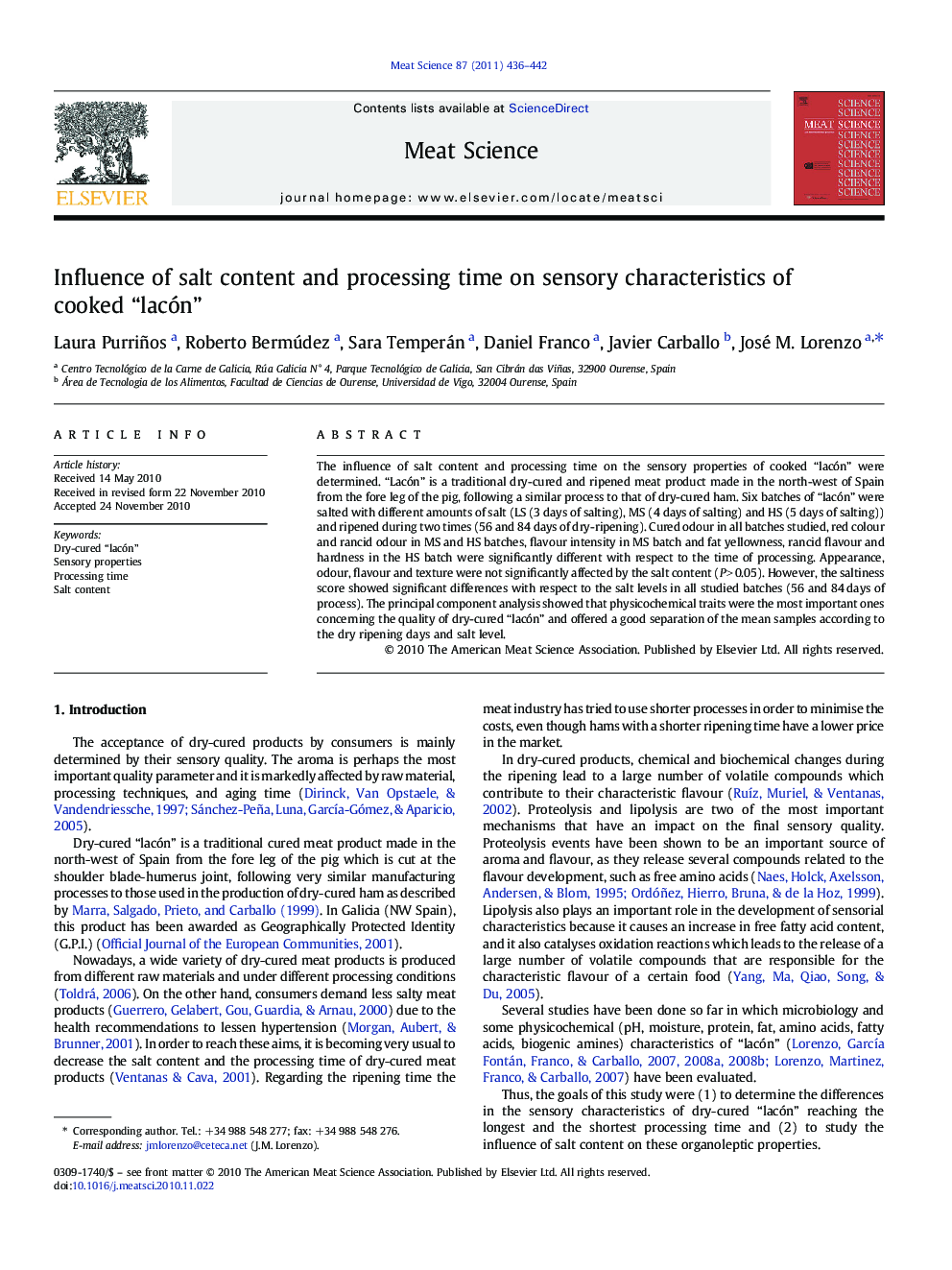| Article ID | Journal | Published Year | Pages | File Type |
|---|---|---|---|---|
| 2450744 | Meat Science | 2011 | 7 Pages |
The influence of salt content and processing time on the sensory properties of cooked “lacón” were determined. “Lacón” is a traditional dry-cured and ripened meat product made in the north-west of Spain from the fore leg of the pig, following a similar process to that of dry-cured ham. Six batches of “lacón” were salted with different amounts of salt (LS (3 days of salting), MS (4 days of salting) and HS (5 days of salting)) and ripened during two times (56 and 84 days of dry-ripening). Cured odour in all batches studied, red colour and rancid odour in MS and HS batches, flavour intensity in MS batch and fat yellowness, rancid flavour and hardness in the HS batch were significantly different with respect to the time of processing. Appearance, odour, flavour and texture were not significantly affected by the salt content (P > 0.05). However, the saltiness score showed significant differences with respect to the salt levels in all studied batches (56 and 84 days of process). The principal component analysis showed that physicochemical traits were the most important ones concerning the quality of dry-cured “lacón” and offered a good separation of the mean samples according to the dry ripening days and salt level.
